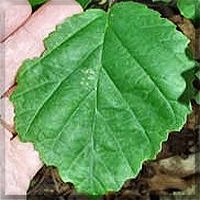


Hamamelis virginiana



Hamamelis virginiana
Other Names Spotted Alder, Winterbloom,. Snapping Hazelnut.
Edible Parts This shrub, long known in cultivation, consists of several crooked branching trunks from one root, 4 to 6 inches in diameter, 10 to 12 feet in height, with a smooth grey bark, leaves 3 to 5 inches long and about 3 inches wide, on short petioles. The leaves drop off in autumn, then the yellow flowers appear, very late in September and in October, in clusters from the joints, followed by black nuts, containing white seeds which are oily and edible. In Britain, the nut does not bear seeds, but in America, they are produced abundantly, but often do not ripen till the following summer. The seeds are ejected violently when ripe, hence the name Snapping Hazelnut. The parts used medicinally are:
The astringency of the leaves and bark makes witch hazel a popular ingredient for various skin conditions as well as for bruises and varicose veins. It is used for the treatment of:
Research - It has long been used by the North American Indians as poultices for painful swellings and tumours. The decoction has been utilized for incipient phthisis, gleet, ophthalmia, menorrhagia and the debilitated state resultingfrom abortion. A tea made of the leaves or bark may be taken freely with advantage, being good for bleeding of the stomach and in complaints of the bowels, and an injection of this tea is excellent for inwardly bleeding piles, the relief being marvellous and the cure speedy. An ointment made of 1 part fluid extract of bark to 9 parts simple ointment is also used as a local application, the concentration Hamamelin being also employed, mainly in the form of suppositories.